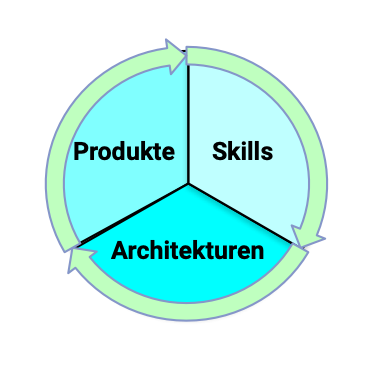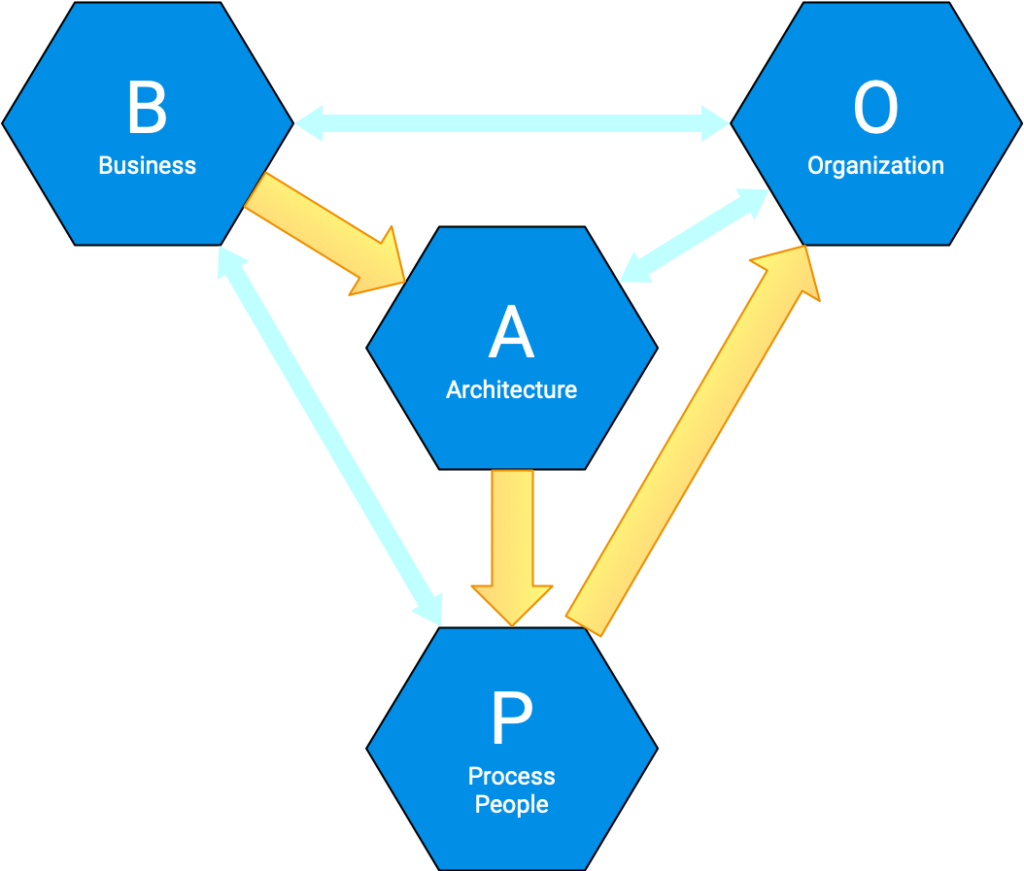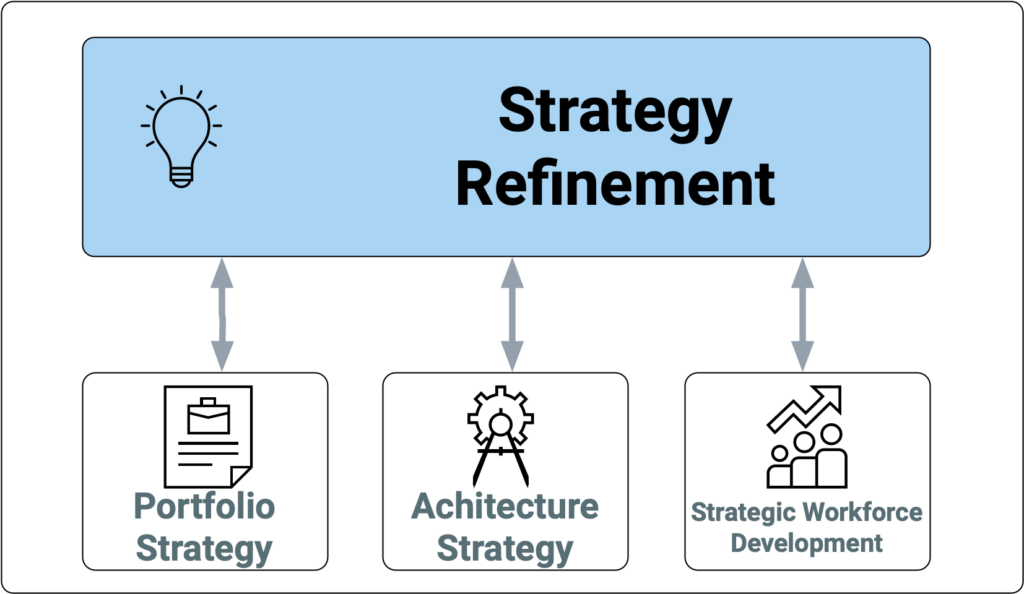There are some crucial steps to go through on the way to implementing a strategy:
- Aligning with the business, not managing current operations
- Portfolios – With the help of portfolios, a company can make its strategy more concrete and implementable. Portfolios help to focus on the right priorities.
Tools for strategy refinement
- Conway’s Law and the Inverse Conway Maneuver
- BAPO
- Three portfolios
Three portfolios

If you look at the term portfolio in general terms, it is a selection of subjects and an allocation of resources.
Based on this, we introduce three types of portfolios that are central to the concretization of a strategy:
- Products: the classic portfolio of products, customers and markets
- Architecture(s) or technology: the set of technical solutions a firm has at its disposal.
- Skill: the abilities of individuals and groups
Conway's law
"Organizations that design systems ... are forced to produce designs that are copies of the communication structures of those organizations ... The larger an organization, the less flexibility it has and the more pronounced the phenomenon."
Melvin E. Conway Tweet
Conway’s law originated in software development, but can be intuitively applied to many other product developments. It is based on the consideration that interpersonal communication is necessary for the definition of interfaces between separate modules. Therefore, the communication structures of organizations have a great influence on the structure of these interfaces.
The inverse Conway manoeuvre
The inverse Conway maneuver uses this observation to suggest organizational structures.
"Technology change is driving changing customer preferences and behavior, which in turn are driving organizational change across increasingly software-driven enterprises. The causality question behind Conway's Law, therefore, is less about how changing software organizations can lead to better software, but rather how companies can best leverage changing technology in order to transform their organizations,"
Bloomberg. Tweet
"organizations which radically change their system design should expect changes in communication structure"
Roy van Rijn Tweet
The BAPO principle

Jan Bosch’s (2017) BAPO model describes four aspects of a development activity while suggesting an order for processing them. The four elements are:
- B for Business: Business is how we generate revenue and profit as an organization.
- A for Architecture: The architecture is the technology, tools, and structure we use to build our system.
- P for process: Processes are the activities and working methods we use in our daily work (we use the “P” here additionally for people according to an idea by Jörg Jockel).
- O for Organization: The organization is the departments, teams and responsibilities that make up the structure of the company.
They’re all connected, but they’re often not aligned. We have already seen in the discussion con Conway’s law what the typical consequences are.
It is also interesting to note that companies are often OPAB rather than BAPO: The existing organization is used as a basis for defining processes out of convenience, which in turn leads to a haphazard architecture. This restrictive architecture, driven by the company’s past rather than its future, then provides a very limited set of options for developing business strategies.
The better order is to follow B-A-P-O.

To implement this, we need to know the fundamentals of our business strategy:
- WHO: who are we going to serve?
- HOW: will we serve these customers?
- WHAT: what customers and services are NOT part of our business?
BAPO thus leads in a wonderfully simple way to an operationalization of our developed principles and strategies.
BAPO Model: Franz von der LInden, Philips Medical Systems
